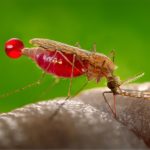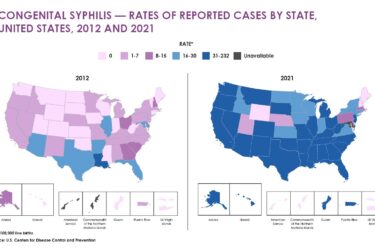
Lyme disease, caused by bacteria carried by black-legged ticks, is more common than previously understood and is on the rise.
AHCJ’s new tip sheet will aid in your reporting on this illness and other tick-borne diseases.
According to a new meta-analysis study published in the June 2022 issue of BMJ Global Health, about 14% of the world’s population likely has had Lyme disease. The analysis of antibodies in laboratory blood samples taken between January 1984 and December 2021 revealed that about 20.7% of people in central Europe, 15.9% in East Asia, and 13.5% and 9% in North America had been infected with the Borrelia burgdorferi bacteria that causes Lyme disease.
“There are more tick-borne disease cases every year,” said John Aucott, M.D., director of the Johns Hopkins Lyme Disease Clinical Research Center, during a June 8 AHCJ webcast. “This is an insidious epidemic. It hasn’t been as dramatic as COVID-19, so it has crept up on us.”
Ticks are emerging earlier from winter hibernation and staying active longer because of climate and deforestation, according to public health experts. As a result, Americans’ risk of infection from pathogens carried by the outdoor pests is rising. According to the CDC, the total number of tick-borne diseases reported to the agency rose by 125% to 50,865 in 2019 from 22,527 in 2004.
Black-legged ticks (also called deer ticks) traditionally have thrived in forests in the Northeast, central north Midwest and the mid-Atlantic, where people were also at risk of contracting tick-borne diseases. But with the weather getting warmer sooner in many parts of the country, ticks have spread farther south, west and east. This CDC has a map of where ticks have spread and regions where ticks have been located from 2020 to 2021.
These figures however, are an underestimate of the prevalence of Lyme and tick-borne disease-related cases because most aren’t reported to the agency. The CDC said it’s likely that the number of cases is ten times larger than reported. For example, in May 2022, Pennsylvania health authorities said they expected at least 100,000 cases of Lyme disease in their state this year.
Lyme disease symptoms such as fever, headaches, and fatigue can mimic signs of COVID-19, causing physicians to be concerned about misdiagnosis, Aucott said. He urged journalists to write about the potential for misdiagnosis and offered additional story ideas.
To learn more about how to cover tick season in your community and find better data and new sources and story ideas, check out AHCJ’s new tip sheet for covering tick-borne disease.






